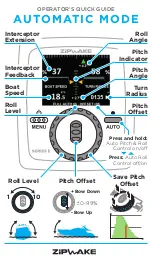
AIO Product Manual
7
Installation
Power is supplied to the AIO with a three conductor AC power cable that plugs into a
locking IEC C14 power inlet located on the Interface Module.
Power cables supplied with the AIO may have a
locking connector to keep it from accidentally
coming loose. However, a cable with a standard,
non-locking plug may also be used.
The power cable has either a US or China style plug with three prongs, one of which is
ground. For safety (see above) and performance reasons,
it is very important that
the AIO is plugged into a properly grounded outlet
. It is also highly recommended
that the AIO, test computer, and any other equipment connected to the AIO are all
powered from the same AC power strip / source which includes surge protection.
To improve reliability and eliminate the possibility of broken switches, the AIO
doesn’t
contain a power switch. Power needs to be turned on and off at the source. The blue
LED on the front panel indicates when power is applied and the AIO is operating.
The AIO requires a
USB 2.0 “HI-SPEED” cable to connect to the host computer. It
plugs into a USB Type-B connector on the Interface Module.
The supplied USB cable has a connector with two
screws to securely connect it to the AIO and keep
it from accidentally coming loose. However, a
cable with a standard USB Type-B plug without
mounting screws may also be used.
Audio connections will vary according to the type of module and the equipment being
connected. These are described in the sections for each module type elsewhere in the
manual.




































